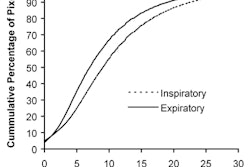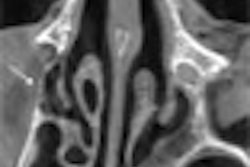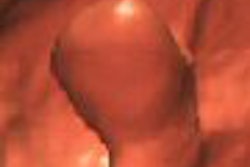ATLANTA - When facilities consider the purchase of a new 64-slice CT scanner, saving money is probably one of the last things on their minds. But a study presented this week at the 2006 American College of Cardiology (ACC) meeting indicates that CT angiography (CTA) may in fact save facilities money.
The researchers found that coronary CTA actually saves money in managing patients with mildly abnormal nuclear stress tests by steering them away from more expensive cardiac cath exams.
CTA can be an effective alternative to catheterization for many patients with intermediate coronary artery disease (CAD) because up to 30% of catheterizations done in the U.S. are negative for obstructive CAD, said lead author Dr. Jason Cole, a cardiologist at Cardiology Associates in Mobile, AL.
"We think that it is exciting," Cole said in his presentation. "Coronary CTA can be readily adapted to a busy clinical practice."
In the study, 206 consecutive patients with mildly abnormal or equivocal nuclear perfusion scans underwent CTA instead of immediate catheterization at the discretion of the treating cardiologist. Cole's practice is a 25-clinician office with a 64-slice scanner. Oral or intravenous beta blockers were used to maintain heart rates below 70 beats per minute during scans.
The scans were classified as normal for 29.6% of patients, nonobstructive CAD for 38.3%, and potentially obstructive CAD for 32.1%.
Then the researchers used a cost model that assumes mildly abnormal nuclear studies tend to lead to cardiac catheterization, and that 64-slice CT would act as a gatekeeper to eliminate unnecessary catheterizations.
The researchers estimated that immediately catheterizing a patient after an abnormal nuclear perfusion scan cost $4,075 per patient, while selectively catheterizing patients based on 64-slice CTA results had a cost of $1,809 per patient. Thus, 64-slice CTA results in savings of $2,266 per patient versus immediate catheterization.
In a related study, researchers from William Beaumont Hospital in Royal Oak, MI, also studied whether 64-slice CTA could be used to rule out CAD in patients complaining of acute chest pain. They studied a group of nearly 200 patients, with 96 receiving CTA and 95 receiving a standard of care (SOC) evaluation that included serial cardiac enzymes, ECGs, and sestamibi rest-stress nuclear imaging.
Patients receiving CTA had a median length of stay of 6.2 hours, significantly shorter than the 14.1 hours in the SOC group, and a shorter time to diagnosis as well: 3.3 hours for CTA versus 12 hours for SOC. The cost of care, at a median of $1,595 for CTA versus $1,784 for SOC, was also lower, but the researchers said the difference was not statistically significant.
While more patients from the CTA group underwent cardiac catheterization (11 versus three), CTA correctly predicted cath results in 91% of cases, versus 67% for the SOC group. The number of cardiac events was low for both groups, and there was no significant difference in the number of events that occurred in the two groups.
By Crystal Phend
AuntMinnie.com contributing writer
March 16, 2006
Related Reading
CT angiography runs circles around stress testing, February 7, 2006
Step-and-shoot acquisition cuts CTA dose, improves images, January 16, 2006
Heart rate determines best CTA reconstruction interval, January 2, 2006
Coronary CTA requires dedication, 64-slice minimum, November 30, 2005
64 CT slices beat 16 for stenosis and diagnosis of heart disease, November 27, 2005
Copyright © 2006 AuntMinnie.com



















